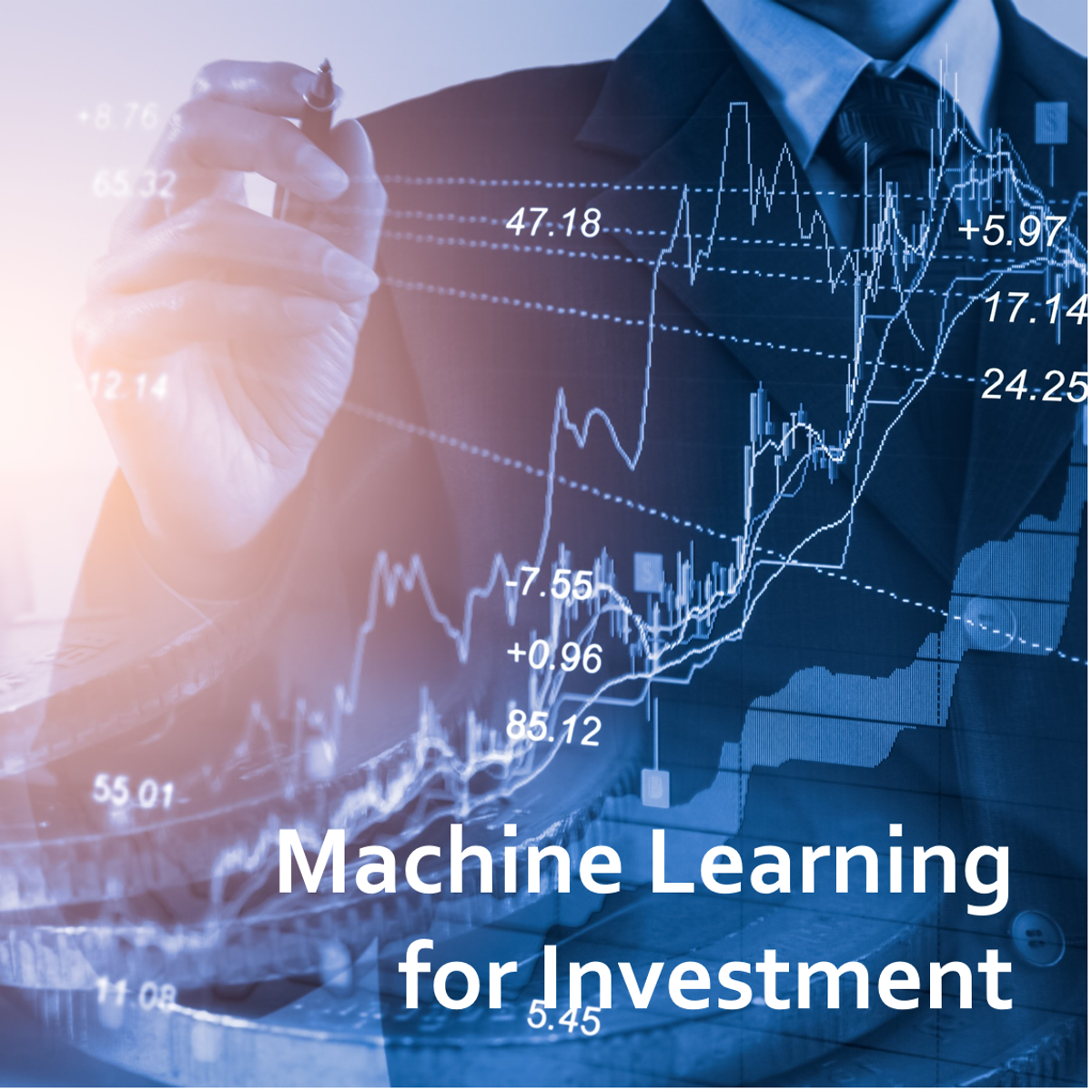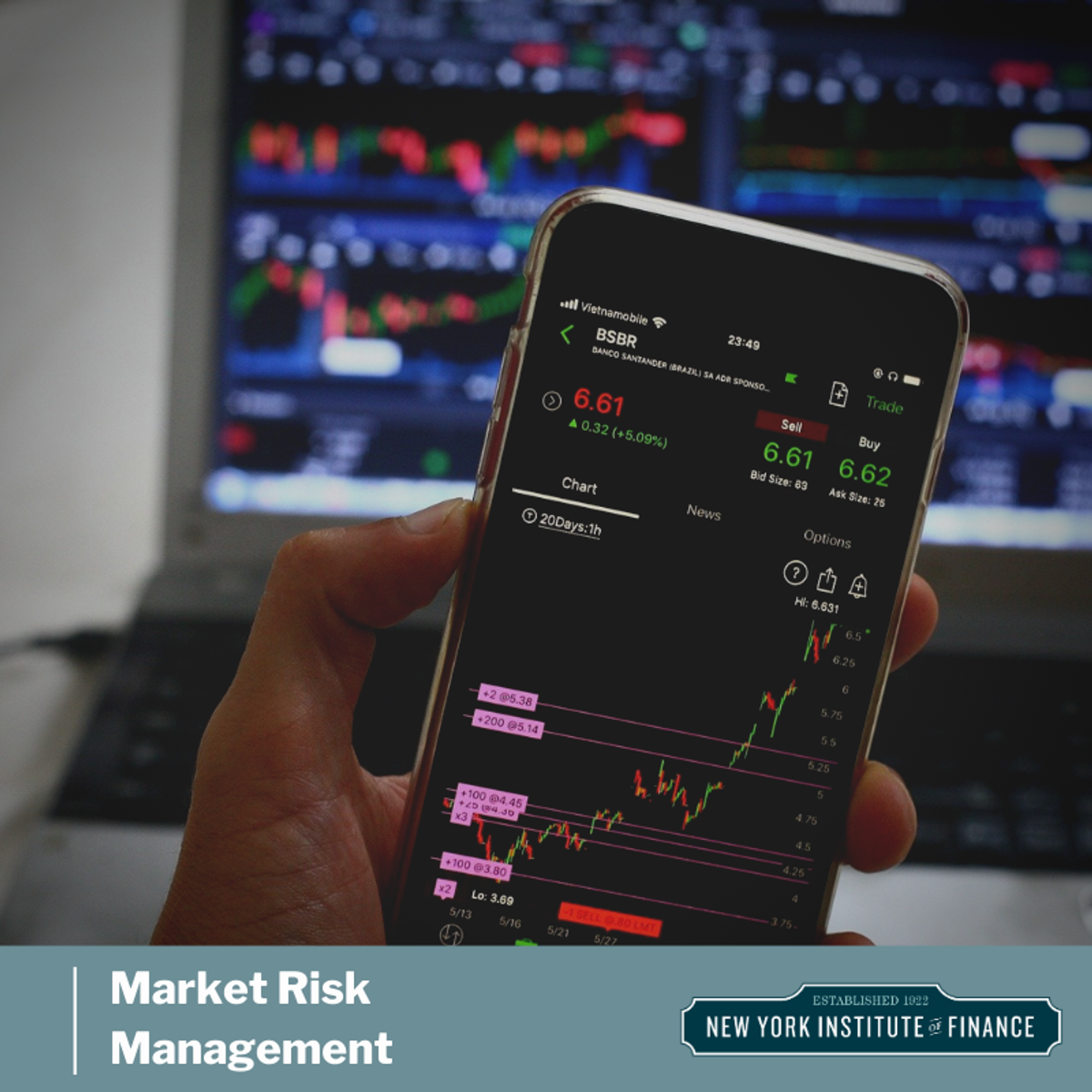Back to Courses









Finance Courses - Page 5
Showing results 41-50 of 270

Using R for Regression and Machine Learning in Investment
In this course, the instructor will discuss various uses of regression in investment problems, and she will extend the discussion to logistic, Lasso, and Ridge regressions. At the same time, the instructor will introduce various concepts of machine learning. You can consider this course as the first step toward using machine learning methodologies in solving investment problems. The course will cover investment analysis topics, but at the same time, make you practice it using R programming. This course's focus is to train you to use various regression methodologies for investment management that you might need to do in your job every day and make you ready for more advanced topics in machine learning.
The course is designed with the assumption that most students already have a little bit of knowledge in financial economics and R programming. Students are expected to have heard about stocks and bonds and balance sheets, earnings, etc., and know the introductory statistics level, such as mean, median, distribution, regression, etc. Students are also expected to know of the instructors' 1st course, 'Fundamental of data-driven investment.'
The instructor will explain the detail of R programming. It will be an excellent course for you to improve your programming skills but you must have basic knowledge in R. If you are very good at R programming, it will provide you with an excellent opportunity to practice again with finance and investment examples.

The Fundamental of Data-Driven Investment
In this course, the instructor will discuss the fundamental analysis of investment using R programming. The course will cover investment analysis topics, but at the same time, make you practice it using R programming. This course's focus is to train you to do the elemental analysis for investment management that you might need to do in your job every day.
Additionally, the study note to do using Python programming will be provided.
The course is designed with the assumption that most students already have a little bit of knowledge in financial economics. Students are expected to have heard about stocks and bonds and balance sheets, earnings, etc., and know the introductory statistics level, such as mean, median, distribution, regression, etc.
The instructor will explain the detail of R programming for beginners. It will be an excellent course for you to improve your programming skills. If you are very good at R programming, it will provide you an excellent opportunity to practice again with finance and investment examples.
Professor Youngju Nielsen creates the course with the assistants of Keonwoo Lim and Jeeun Yuen.
===========================================================================================
Coursera Course recommendations before this course for those who are not familiar with basic R programming:
<Getting Started with R>
https://www.coursera.org/projects/getting-started-with-r
<Introduction to Business Analytics with R>
https://www.coursera.org/learn/business-analytics-r
<Statistics with Python >
https://www.coursera.org/specializations/statistics-with-python

Valuation for Startups Using Discounted Cash Flows Approach
Discounted cash flow method means that we can find firm value by discounting future cash flows of a firm. That is, firm value is present value of cash flows a firm generates in the future. In order to understand the meaning of present value, we are going to discuss time value of money, first. That is, the value of $100 today is different from the value of $100 a year later. Then, what should be the present value of $100 that you are going to receive in 1 year? How about the value of $100 dollars that you are going to receive every year for next 10 years? How about forever? After taking this course, you are going to be able to find the present value of these types of cash flows in the future. Unlike most of finance courses, in this course, you are going to learn how to use excel to find present value of future cash flows. In addition to the present value, you are also going to learn how to find future value given investment; interest rate given investment and future cash flows, payments given interest rates, number of periods to wait given investment and interest rate, and so on. After learning the concept and how to find the time value of money, you are going to apply this to real world examples and company valuation. After taking this course, you will be ready to make an estimate of firm value by discounting its cash flows in the future.

Machine Learning for Investment Professionals
This course is uniquely tailored to the needs of investment professionals or those with investment industry knowledge who want to develop a basic, practical understanding of machine learning techniques and how they are used in the investment process. Incorporating real-life case studies, this course covers both the technical and the “soft skills” necessary for investment professionals to stay relevant.
In this course, you will learn how to:
- Distinguish between supervised and unsupervised machine learning and deep learning
- Describe how machine learning algorithm performance is evaluated
- Describe supervised and unsupervised machine learning algorithms and determine the problems they are best suited for
- Describe neural networks, deep learning nets, and reinforcement learning
- Choose an appropriate machine learning algorithm
- Describe the value of integrating machine learning and data projects in the investment process
- Work with data scientists and investment teams to harness information and insights from within large and alternative data sets
- Apply the CFA Institute Ethical Decision-Making Framework to machine learning dilemmas
This course is part of the Data Science for Investment Professionals Specialization offered by CFA Institute.

Startup Valuation Methods
How do different types of investors think about an investment opportunity? What kind of securities and contracts do they offer? How should a company decide what is a "good deal"? This course is designed to introduce you to the challenges and pitfalls of financing new enterprises. You will learn the basic tools for valuating companies, including using discounted cashflow analysis in Excel and understanding how to apply this model to your entrepreneurial venture. You will then learn how valuation works with different types of securities that investors use to finance startups, from bank loans to venture capital to angel investing.

Fundamentals of Equities
In this course, will look at industries and economic sectors that neatly define an economy. We will also introduce you to fundamental concepts involved in a company’s annual statements such as balance sheets, cash flows and its income statement, plus explore popular fundamental values used to filter vast amounts of corporate stocks. And finally, we’ll examine mutual funds and ETFs as alternatives to individual stocks for investing.
To facilitate a comprehensive understanding of essential concepts discussed, this course includes a series of practical examples, quizzes, reading materials and a final course project.

Market Risk Management: Frameworks & Strategies
This course provides the foundation for understanding the frameworks used to develop market risk management strategies. You will identify the market risks associated with each type of financial instrument. You will be introduced to techniques for estimating the risk associated with each class of investments. By the end of the course, you will be able to select the most effective derivatives for managing risk of a single asset and a portfolio of assets, develop asset selection strategies for managing risk in a portfolio, and model risk associated with a single asset and a portfolio of assets.
Learners will complete a project covering the estimation and analysis of risk in a globally diversified equity portfolio. The portfolio will include allocations of equity indexes from the U.S., Japan, Hong Kong, and Germany. Data for the two years prior to March 2020 will be used to convert daily returns in each indexes' currency into dollar returns. Value-at-Risk and Expected Shortfall for the portfolio will be calculated using an equal-weighted sample and an exponentially weighted sample. Learners will then be given a new 2-year data set that includes the market data through August of 2020. They will be asked to re-evaluate risk for the portfolio using Value-at-Risk and Expected Shortfall.

ESG Investing: Industry Impacts & Transformations
Through this ESG Investing: Industry Impacts & Transformations course, students with basic knowledge of traditional financial products can explore how certain financial market sectors have been transforming, amid a heightened focus on risk factors that underpin the three pillars of ESG. For example, what led age-old, iconic companies such as Borden and Dean Foods to file for bankruptcy? How are traditional oil giants BP and Exxon Mobil managing the energy transition? And what steps are firms such as International Paper and WestRock taking to align their business operations with forestry concerns? Through a series of video, webinar, and reading modules, among other objectives, you’ll learn how to conduct critical analyses about certain market sector changes, including dairy, tobacco, energy, and forest products, as well as examine the potential role for certain commodities, as industries such as the auto sector undergo transformation. You should also be able to assess the potential impacts on the creditworthiness of certain high yield companies amid shifts in ESG strategies.

Portfolio Diversification using Correlation Matrix
By the end of the project, you will be able to apply correlation matrix in portfolio diversification.
ATTENTION: To take this course, it is required that you are familiar basic financial risk management concepts. You can gain them by taking the guided project Compare Stock Returns with Google Sheets.
Note: This course works best for learners who are based in the North America region. We're currently working on providing the same experience in other regions.
This course's content is not intended to be investment advice and does not constitute an offer to perform any operations in the regulated or unregulated financial market

Value and Business Decision Making
This course is part of a Specialization titled “Strategy and Finance for a Lifecycle of a Social Business”. It is an introduction to time value of money and will help the learner understand the basics of finance with the ultimate goal of valuing a company from a societal lens.
The beauty of the modern decision-making framework is that it can be used to understand value creation at any level – the individual, the corporate or nonprofit entity level and from the point of view of society. The applications however become increasingly complex as your lens expands from the individual to the corporate/nonprofit to the global society. In this Specialization we will therefore focus on understanding the frameworks and tools that an individual and an entity (a startup or an established corporation, private or public) can use to understand value enhancing decision-making.
There are two building blocks of decision making – time value of money and risk.
In this second course, we will use the same framework developed in the first course to evaluate decision-making by entities – businesses – to create value. We will realize how the evaluating value from the lens of multiple stakeholders is inherently more complex. You are also encouraged to think from a societal standpoint because that, ultimately, is the difference between a social and a private business. The societal perspective is the most complex and market prices are typically not available for both the benefits and costs.
As indicated at the outset, the beauty of modern frameworks and tools of analysis is that they are logical and do not change depending on the purpose of business. However, to demonstrate social impact is very complex because prices for both the public good, and any harm created by our actions, are not available. It is also very challenging to determine the incremental effect of a business on society at large. The combination of these issues makes all social impact and value specific to a business, making it even more important to use the same frameworks and tools developed in this Specialization to value any business.
Popular Internships and Jobs by Categories
Find Jobs & Internships
Browse
© 2024 BoostGrad | All rights reserved